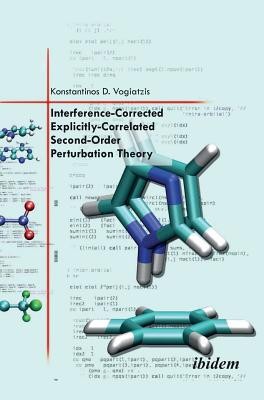
- We will send in 10–14 business days.
- Author: Konstantinos D Vogiatzis
- Publisher: Ibidem Press
- ISBN-10: 3838204778
- ISBN-13: 9783838204772
- Format: 17 x 24.4 x 1.1 cm, kieti viršeliai
- Language: English
- SAVE -10% with code: EXTRA
Interference-Corrected Explicitly-Correlated Second-Order Perturbation Theory. (e-book) (used book) | bookbook.eu
Reviews
Description
Konstantinos D. Vogiatzis presents a new approximate coupled-cluster scheme which estimates the coupled-cluster singles-and-doubles with perturbative triples (CCSD(T)) energy at the ba-sis set limit. The CCSD(T) method is considered nowadays as the 'gold standard' of modern electronic structure theory. The major limitations of the method are the large computational time and computer resources needed for obtaining high accuracy. In the new method presented by Vogiatzis, this drawback is eliminated by adding terms obtained from the interference-corrected explicitly-correlated second-order perturbation theory. The new "CCSD(T)-INT-F12" method reaches the expected high accuracy of CCSD(T) in significantly shorter time. The theoretical background of the CCSD(T)-INT-F12 method is discussed and its im-plementation is analyzed in terms of computational efficiency and accuracy. The perfor-mance of the method has been tested in two different fields. The first covers the calculation of atomization energies and reaction barrier heights, and the importance of the interference corrections is highlighted. The second part is related to noncovalent interactions. The high accuracy of the CCSD(T)-INT-F12 method for the calculation of interaction energies is shown from the excellent results obtained for the S22 test set. Based on this, the method is used for the theoretical description of two different applications related to noncovalent interactions: The non-classical amino NH...π hydrogen bond and the hydrogen adsorption in metal-organic frameworks (MOFs) with open metal sites. For the latter, the surprising strength of the interaction indicates a possible application of such porous materials that exhibit open metal sites as hydrogen carriers.
EXTRA 10 % discount with code: EXTRA
The promotion ends in 21d.20:57:27
The discount code is valid when purchasing from 10 €. Discounts do not stack.
- Author: Konstantinos D Vogiatzis
- Publisher: Ibidem Press
- ISBN-10: 3838204778
- ISBN-13: 9783838204772
- Format: 17 x 24.4 x 1.1 cm, kieti viršeliai
- Language: English English
Konstantinos D. Vogiatzis presents a new approximate coupled-cluster scheme which estimates the coupled-cluster singles-and-doubles with perturbative triples (CCSD(T)) energy at the ba-sis set limit. The CCSD(T) method is considered nowadays as the 'gold standard' of modern electronic structure theory. The major limitations of the method are the large computational time and computer resources needed for obtaining high accuracy. In the new method presented by Vogiatzis, this drawback is eliminated by adding terms obtained from the interference-corrected explicitly-correlated second-order perturbation theory. The new "CCSD(T)-INT-F12" method reaches the expected high accuracy of CCSD(T) in significantly shorter time. The theoretical background of the CCSD(T)-INT-F12 method is discussed and its im-plementation is analyzed in terms of computational efficiency and accuracy. The perfor-mance of the method has been tested in two different fields. The first covers the calculation of atomization energies and reaction barrier heights, and the importance of the interference corrections is highlighted. The second part is related to noncovalent interactions. The high accuracy of the CCSD(T)-INT-F12 method for the calculation of interaction energies is shown from the excellent results obtained for the S22 test set. Based on this, the method is used for the theoretical description of two different applications related to noncovalent interactions: The non-classical amino NH...π hydrogen bond and the hydrogen adsorption in metal-organic frameworks (MOFs) with open metal sites. For the latter, the surprising strength of the interaction indicates a possible application of such porous materials that exhibit open metal sites as hydrogen carriers.


Reviews